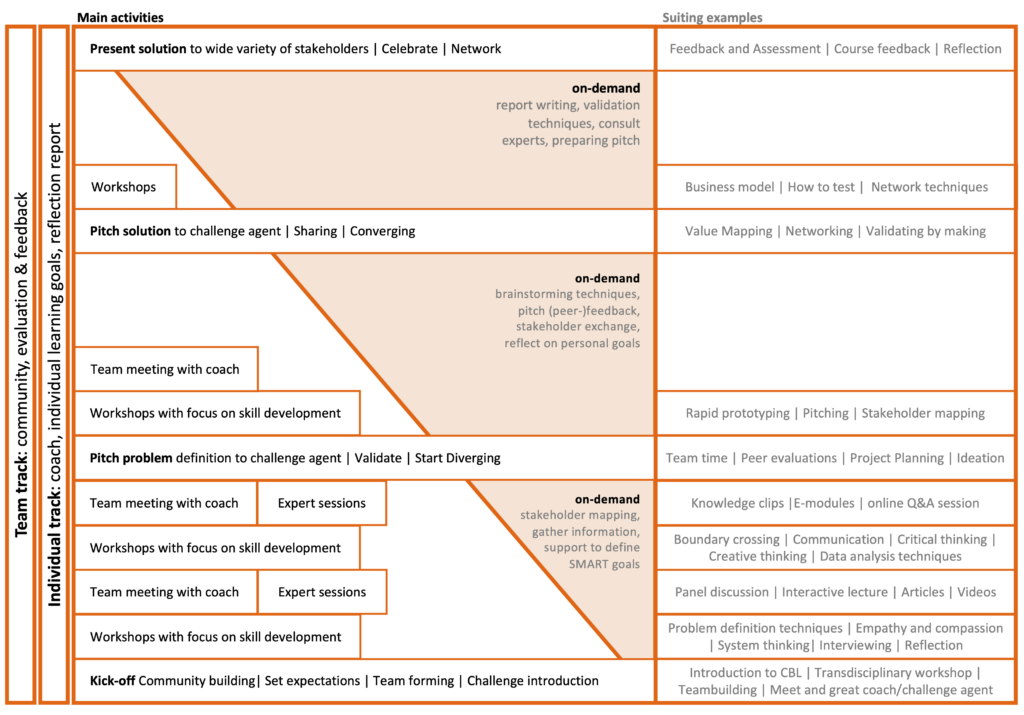The learning journey of a CBL course is composed by a wide variety of learning activities and often structured in several phases. Learning activities are both constructed and conducted in the community of practice and can thus change over time. It is the responsibility of the course coordinator to build the foundation and guard the common thread throughout the process.
As EWUU, we recommend the design thinking model (IDF, n.d. ) and/ or the double diamond (Designorate, 2021 ). Based on these frameworks the milestones (and live events) can be defined and used as a starting point to design and structure the learning journey.
Watch the video below to get acquainted:
The design thinking model is usually split into five or six phases that are visualized as a linear process. Depending on the duration, learning outcomes and didactical preference the process can end at ‘test’, ‘share’ (as indicated in the visual) or even ‘implement’. By explicitly connecting the design thinking model to the double diamond framework we would like to emphasize that the process as a whole is in fact iterative and consists of alternating phases of diverging and converging. Note that these models are complementary and can be combined to create a process that suits your learning journey.

In our experience, participating teams tend to immediately jump into ideas and conclusions, which has a negative impact on both the learning process and the final outcomes. In the CBL learning journey, where the challenge is open-ended and ill-defined, it is very important to give explicit attention to the process of empathizing and defining. This context asks for open collaboration in a rich community of practice, before converging to a specific problem. This process of emphasizing and connecting to stakeholders also contributes to an increased feeling of ownership.
Course coordinators need to find the right balance between offering freedom and providing structure, in order to foster the learner’s sense of ownership. In general, the structure and thus the facilitated learning activities should decrease during the challenge process. However, the duration of the course, the agreed learning outcomes and the stakeholders involved are also important factors in finding the appropriate balance. The more mature and experienced the learners, the more freedom and autonomy they will demand.

Learning activities can be suggested by the course coordinator and other core-team members. The networks of the challenge agent and the teachers are crucial for connecting with a wide variety of experts for both facilitated and on-demand activities. However, the learners have their responsibility in this process. Not only by reaching out to (potential) stakeholders but also by designing their own learning activities, sharing their expertise in the community of practice and providing (peer) feedback if requested. This means that not all activities will be clear (or even existing) at the start of the course. The journey will evolve with the process and needs to be flexible to align with the needs and solutions of the learners.

Examples of learning journeys from previous challenges can be found on the Case studies pages.